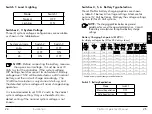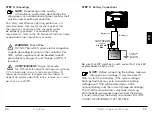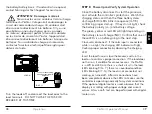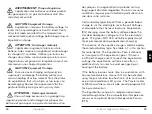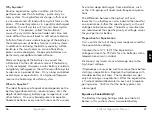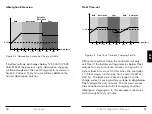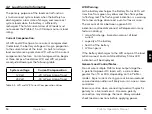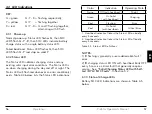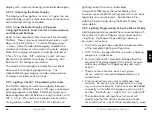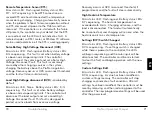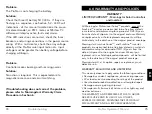
Operation
ProStar Operator’s Manual
47
46
4.0
Why Equalize?
Routine equalization cycles are often vital to the
performance and life of a battery - particularly in a
solar system. During battery discharge, sulfuric acid
is consumed and soft lead sulfate crystals form on the
plates. If the battery remains in a partially discharged
condition, the soft crystals will turn into hard crystals
over time. This process, called “lead sulfation”,
causes the crystals to become harder over time and
more difficult to convert back to soft active materials.
Sulfation from chronic undercharging of the battery is
the leading cause of battery failures in solar systems.
In addition to reducing the battery capacity, sulfate
build-up is the most common cause of buckling
plates and cracked grids. Deep cycle batteries are
particularly susceptible to lead sulfation.
Normal charging of the battery can convert the
sulfate back to the soft active material if the battery
is fully recharged. However, a solar battery is seldom
completely recharged, so the soft lead sulfate crystals
harden over a period of time. Only a long controlled
overcharge, or equalization, at a higher voltage can
reverse the hardening of sulfate crystals.
When to Equalize?
The ideal frequency of equalizations depends on the
battery type (lead-calcium, lead-antimony, etc.), the
depth of discharging, battery age, temperature, and
other factors. One very broad guide is to equalize
flooded batteries every one to three months or every
five to ten deep discharges. Some batteries, such
as the L-16 group, will need more frequent equaliza-
tions.
The difference between the highest cell and
lowest cell in a battery can also indicate the need for
an equalization. Either the specific gravity or the cell
voltage can be measured. The battery manufacturer
can recommend the specific gravity or voltage values
for your particular battery.
Preparation for Equalization
First, confirm that all of the system loads are rated for
the equalization voltage.
Consider that at 0°C (32°F) the Equalization
voltage will reach 16.75 Volts for L-16 batteries with a
temperature sensor installed.
Disconnect any loads at risk of damage due to the
high input voltage.
If Hydrocaps are used, be sure to remove them before
starting an equalization. Replace the Hydrocaps with
standard battery cell caps. The Hydrocaps can get
very hot during an equalization. After the equalization
is finished, add distilled water to each cell to replace
gasing losses. Confirm that the battery plates are
submerged.
Equalize a Sealed Battery?
The Battery Charging Settings table (see table 4-1
below, in this section) shows two sealed battery




